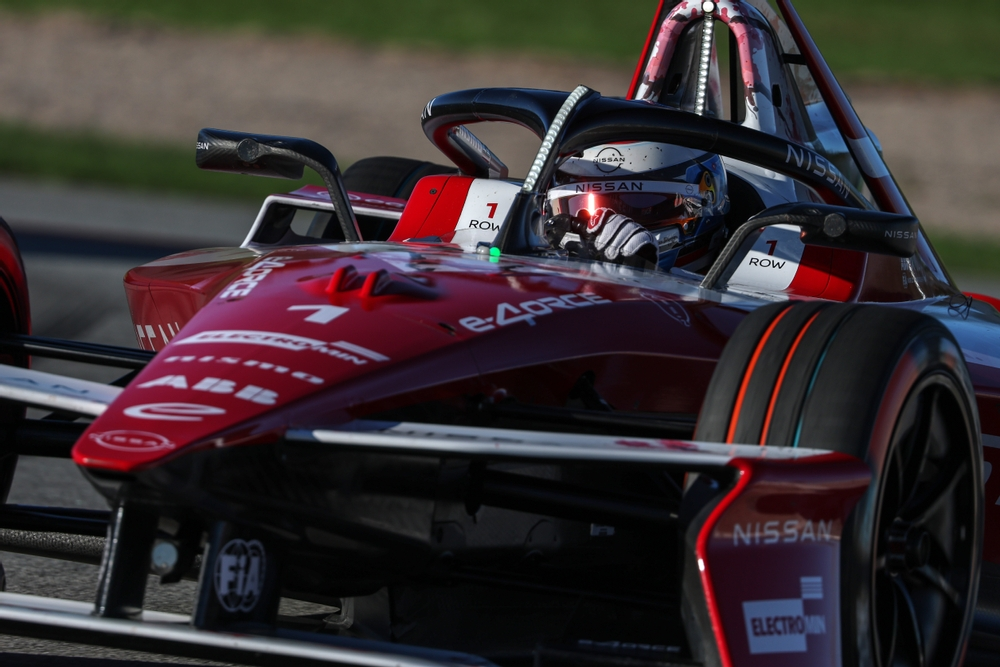
August marked the conclusion of the IndyCar 2025 season, sparking a flurry of contract negotiations and rumors about drivers switching teams or leaving the series entirely.
Among them, Colton Herta made headlines when Cadillac announced him as their F1 Reserve Driver on Tuesday. IndyCar Socials confirmed that Herta will not compete in the series for the 2026 season.
What Is IndyCar?
IndyCar primarily races in North America, utilizing ovals, street circuits, and road courses. The significant variation in circuits throughout a single calendar year fosters competitive racing, as drivers or cars that excel on ovals may struggle on other types of tracks.
Teams source their engines from either Chevy or Honda and their chassis from Dallara, establishing IndyCar as a spec series. While teams can create their own aero packages and make adjustments within a set of regulations, they must maintain the fundamental chassis and engine.
These rules contribute to a competitive motorsport series that distinguishes itself from NASCAR and F1.
Additionally, unlike F1, FE, and WEC, IndyCar operates independently of the FIA.
This independence leads to a significant issue: IndyCar does not offer sufficient super license points.
What is a Super License?
Formula 1 drivers must obtain a Super License, accumulating points throughout their careers primarily through FIA-supported junior series like F3 and F2.
Drivers earn points based on their finishing positions, often spending years in junior formulas to gather enough points, even when they have support to advance.
F1 Teams must pay for a driver’s super license, with fees increasing based on the points earned in the previous season. As of 2025, Max Verstappen holds the highest super license fee.
While non-FIA-accredited formulas contribute to license points, they do so on a much smaller scale. Drivers who compete in other junior formulas, such as NXT IndyCar, GB3, rally racing, and motorsport cups, often transition to FE, IndyCar, or WEC.
However, their achievements in these championships do not yield enough points for a super license, hindering their ability to move from IndyCar to F1, while F1 drivers can easily join IndyCar.
Consequently, many perceive IndyCar as a “lesser” form of motorsport, despite F1 drivers like Max Verstappen acknowledging the unique challenges IndyCar presents, particularly the distinct driving style required for ovals.
IndyCar is Not a Pathway to F1
If IndyCar offered super license points comparable to F1 and F2, we would see more crossover between IndyCar and F1 drivers.
This shift could expand the American F1 driver market and help fans recognise that IndyCar holds its own alongside F1.
IndyCar’s desire to maintain independence from F1 may contribute to its low super license points. By not wanting to be viewed as a junior formula to F1, awarding equal points to F2 would contradict that goal.
Ultimately, the FIA maintains that young drivers should pursue FIA-accredited formulas as their path to F1, rather than exploring alternative motorsport avenues.
So, how can Colton Herta serve as an F1 reserve without a super license?
Rumours suggest he will join F2 next year, although his team has yet to confirm this. This likely explains his departure from IndyCar, as many F2 weekends conflict with IndyCar’s schedule. Achieving enough high finishes in F2 will help Herta accumulate the points he needs for a super license.
It’s a peculiar situation: a seasoned IndyCar driver with wins and a highest championship finish of 2nd, at just 25 years old, will compete against less experienced young drivers for the same goal—Formula 1.
Cadillac aims to secure an American driver for the future, and the fastest route to that goal is through F2. As strange and unfair as it may seem, this is the necessary path. But it shouldn’t be.
IndyCar deserves equal recognition alongside WEC, FE, and F2, despite its lack of FIA affiliation. If F1 wants to thrive in the U.S., it must go beyond creating circuits and address the core issue: inaccessibility.
Young American drivers feel compelled to move to Europe to pursue their F1 dreams, contradicting the American dream that other U.S.-based motorsports promote. As they transition overseas, they lose local support from fans and sponsors, making it harder for them to maintain visibility. This is due to time zone and geographical differences that make junior careers difficult to follow overseas.
Even when they achieve success in the U.S., as Herta has, they face penalties for not pursuing European championships.
Americans rally behind any compatriot who reaches F1, as is the case in any country. Consider Latin American drivers like Sergio Perez, who enjoy immense support from fans and sponsors in Mexico due to their representation on the global stage. This support not only boosts viewership but also enhances the success of Latin American circuits like those in Mexico and Brazil.
This dynamic also applies to European drivers. The Dutch Grand Prix gained popularity following the challenges of 2020 and the success of their home champion, Max Verstappen, who last won the race before its return in 2020.
IndyCar is not F1, and it doesn’t need to be. The strengths and requirements of IndyCar make it unique, and while those may be different to F1, they are not inferior. IndyCar stands on its own as a type of motorsport, and the FIA would do well to recognise that.
For several years, F1 have been breaking into the American market, with increases in U.S. based sponsorships, and the ever-popular Drive to Survive.
An American team with an American driver, nurtured through their own junior formulas and other motorsport pinnacles, can cultivate a larger fanbase and create a stronger incentive for U.S. audiences to watch F1.
All it takes is a change to a points system.


